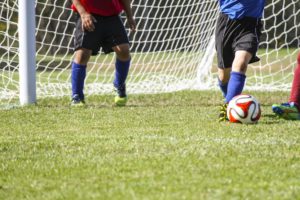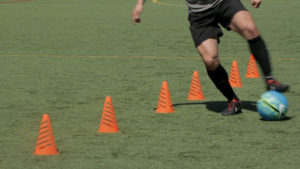“I don’t have time for hobbies. At the end of the day, I treat Football as a hobby. It’s something I love doing” – David Beckham
Practice should be enjoyable. One of our roles of coaching foundation age players is to make sure that players leave our sessions already looking forward to the next one. As well as this, it is important that our players are learning from us. It is a great skill to be able to put together a session that keeps faces smiling and challenges the players.
In order to be successful with this, we must look at ways to keep the players engaged throughout the session. No 2 teams are the same. What works for one, may be different for the other. I've had it in the past where a U9 boys team I coached benefitted more from the Whole-Part-Whole layout. Another team in the same age got more from the Unopposed-Opposed-Game structure.
What I have found is that, regardless of the session structure you go for, the following 4 tips have their role to play in keeping most foundation age players consistently engaged in sessions.
Start with a Game

A few years back I was coaching a team where it would take up to 10 minutes after our proposed start time before all players had arrived. Based on a suggestion from a colleague, I decided to start the first 10 mins with 2 small sided games on the go. The thought behind this was two-fold
- They could easily integrate with an activity upon arrival
- It would give them a reason to get to practice on time
While there were some players who would still arrive late (through no fault of their own), the punctuality for most improved, knowing that it would lead to an increase in time playing a game. It also allowed the players to get straight into practice mode in time for the start of the session. They were engaged from the get go and by the time the main portion of the practice began. The players had enough time to shake the school cobwebs off, while working soccer-specific skills such as touch, communication and work rate.
Name a Skill after your Players

The Cryuff Turn, the Blanco Bounce and the Panenka Penalty are all moves on the football pitch that are named after the professional players who brough them to the fore. Johan Cruyff, whom the 'Cruyff Turn' was named after, stated "There is no greater medal than to be acclaimed for your style." If one of the greatest players of all time feels that way, imagine how little Jonny in your U8 team would feel having a move named after him?
Naming moves and turns after players is somehing I have done for a long time. Even months after, when my memory has slipped and I have gone back to referring to a turn by it's original name, I have had the player correct me. It's a big thing and can add a great deal to your sessions.
Running a session that involves volleys? Re-name the volley after the player who performs it best.
How about showing player's the Cryuff Turn? Tell your players you spoke to Johan's family about changing the name of the turn.
I had U10 hit the post from an overhead bicycle kick in his first ever travel game. It was known as "The Bryson" from that moment forward.
Players take greater ownership when something is 'theirs', and their name is greater currency than any medal or trophy. Give them a chance to receive that recognition in your practices.
Add a Time Limit or Race

Studies have shown that competition is beneficial when improving the performance in physical tasks. While we can provide opposition in opposed activities, unopposed can become monotonous. Foundation age players are still developing their attention spans and it is important that we set tasks to work with that. Having players race against each other will increase the speed at which they perform.
One of my favourite activities when first working with a U8 team is Through the Gates. This is a game that incorporates dribbling, ball manipulation and turning. The different progressions lead to players racing against themselves, a partner and a team. Whereas players may go through the motions by just performing the activity, the race element increases speed and intensity. What we must make sure of is that players get points taken off for trying to stretch the rules, as competition can cause.
Time limits also add an element of urgency. I find that time limits help with any 1 to 1 sessions that I have run. Giving players a set time to perform a certain number of repetitions keeps the energy levels at game level.
While they may not replicate the true intensity of the game, races and time limits help with the muscle memory of performing certain skills at speed. For players who may only practice at a team session, this provides invaluable for helping build their confidence on the ball in pressure situations.
Add More Balls

In the same way that races between players or groups can help players perform skills at speed, multiple balls are a great way of increasing the engagement during passing pattern practices. With only 1 ball on the move, players can have a lot of time standing still, even with smaller groups. With 2 or even 4 balls, players get little or no time to stand still and switch off, otherwise the practice will break down. The video below is a former U12 team of mine performing the X Passing Pattern with 4 balls
As you can see, there is very little standing around. Mistakes will happen (as they did in the video above), but the players take into account the focus and communication that is needed for the practice to be successful.
With all the coaching points involved - body shape, awareness, weight of pass, accuracy of pass, timing of run - multi-ball passing practices also encourage players to think quickly and develop a technique that happens instinctively.

